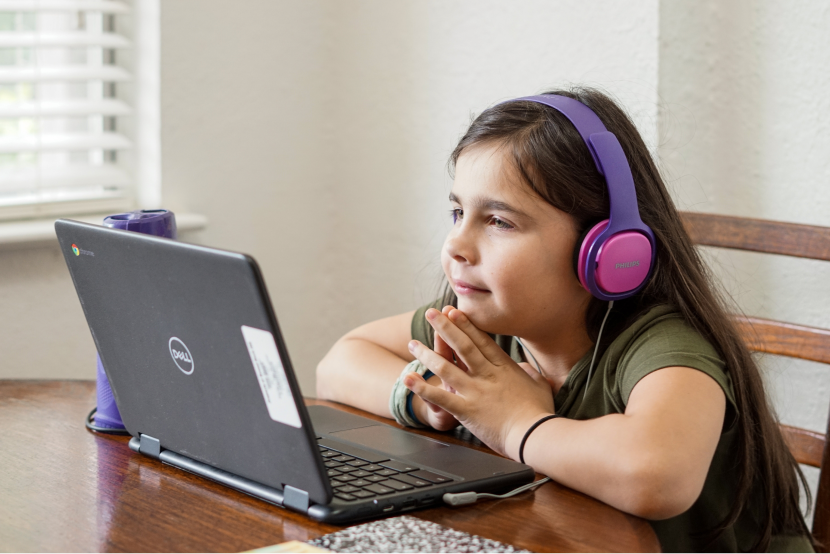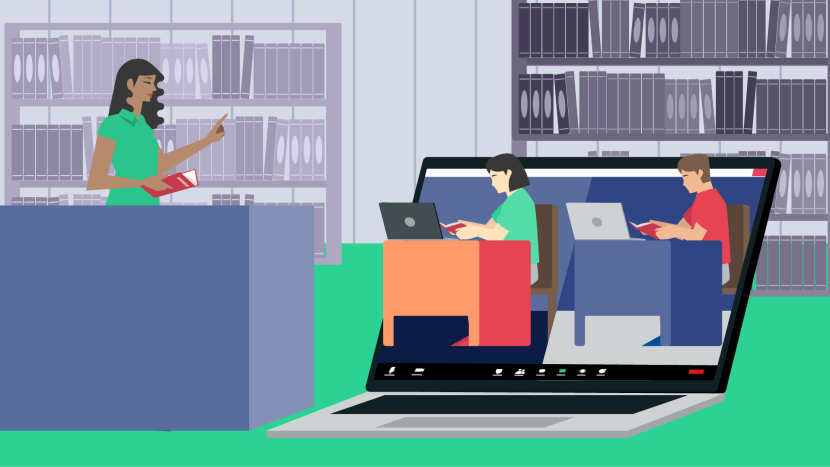When the pandemic first hit and the world moved remote, schools were among the fastest to adapt to our new reality. It’s particularly impressive how nimbly K–12 institutions moved, given their starting place: while many workplaces and companies already had WFH policies and programs in place, schools were largely beginning from scratch, implementing the software and systems required to continue learning from home essentially overnight. The way libraries and teachers adapted to the changes needed to help their students was — and remains — downright inspiring.
There’s so much we can learn about how schools made this switch — in particular, how K–12 libraries quickly moved online and adapted their offerings in order to continue providing value to students. Even as we return to in-person activities in some parts of the world, these implementations point the way to a future where digital and in-person programming co-exist. Here are some of those key remote learning takeaways from the schools that did it best.
See also:
- The evolving role of librarians: how is library leadership changing?
- Here’s how teachers can partner with librarians to teach media literacy at school
Introducing curbside pickup and delivery
Though 38.4% of schools did not allow students to enter the library during COVID-19 closures, librarians didn’t cut off access to materials completely. For physical books and documents, libraries across North America offered personal delivery and pickup programs to ensure students could still check things out safely and securely when schools were closed down. And when schools were operating under restrictions, they implemented services like classroom-to-classroom book carts. One Massachusetts librarian even decorated hers like a “book bus” to make the delivery experience more fun for the kids.
Making resources available digitally
While many schools already offered some form of e-book or digital content access, the virtual library has been even more helpful during pandemic times. Many schools embraced or increased their digital content offerings and provided students with resources they could access via computer or smartphone. PressReader is one of the tools that K–12 institutions tapped into over the course of COVID-19, providing kids with access to over 7,000 publications from across the globe for their research projects and assignments.

Digital access also, helpfully, offers ‘round-the-clock access to resources for students and teachers (not to mention the ability to access information from anywhere), creating the opportunity for flexible learning for every schedule in a way that in-person library hours might not.
Onboarding users smoothly
It’s one thing for school libraries to adopt technology and digital infrastructure. It’s another to get the community to actually use these tools. In one survey from the Ontario School Library Association, “helping teachers and students connect to distance learning technology” and “helping students and teachers access and navigate online learning platforms” were among the key functions of library staff between March and June 2020.

Librarians and staff helped make the process smooth by building out new communications channels to keep everyone connected and up to date (for instance, creating websites for students, sending newsletters, helping with one-on-one reference work and posting on social media). They also stepped up to support teaching staff with their strategies for their online learning environments, and helped address copyright concerns as teachers began accessing more materials online.
Addressing mental health head on
At a glance, mental health may not be a natural responsibility of a school librarian. But during the pandemic, many staff at K–12 institutions found themselves on the frontlines of support. One of the most important things that library workers did to adjust to the remote world was to share mental-health resources with students and teachers as pandemic anxiety grew.
These players also gave teachers a chance to rest by partnering with them to take on classwork. The importance of teaming up and working together to offer the best support possible to the community is a takeaway that will live beyond the remote learning era.
Cultivating community
The remote learning context that schools found themselves in as the pandemic developed was obviously an isolating experience for many. But technology did offer the opportunity for connection in a new way. We saw school librarians in schools across the continent developing online book clubs and other real-time, virtual programs, to maintain a sense of connection between students. One California librarian even started hosting her own unboxing videos of book shipments and doing readings online, to help keep the librarian-student relationship alive when they needed to be apart.

It’s impossible to know exactly how the future of the school library will look, but looking back at the adaptations so many savvy K–12 institutions made to their library programs, it’s easy to see that the combination of technology and community will continue to be critical to keeping information and education alive and well.
Are you considering technology upgrades to make your library more digital-friendly? Learn more about PressReader for libraries and download our report about the Future of Libraries to learn about the evolving role of libraries and technology in information literacy, democracy and education.







